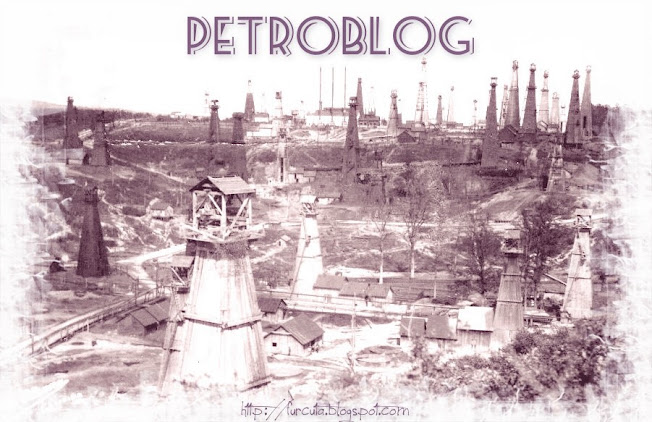Moreni,1929 - a small village in the heart of the romanian oil district, which yearly produces 4,282,377 tons of crude petroleum, one-sixth of the world's output. After years of surface exploitation, the large companies, including the Standard, the Romano-American, and the Dutch Shell, began extensive subterranean digging, and it was from well 16O RA, now a roaring pillar of flames and smoke, that the Standard had anticipated a huge supply . The digging had been completed, pumps and pipes had been laid and everything was prepared for the first gush from a depth of 1453 metres. Everything went well, albeit the initial burst was so terrific that the villagers and engineers, although used to happenings of this kind, were anxious. The pressure, was 200 atmospheres, and the first shock carried light, machinery and structural scaffolding hundreds of metres into the air to be scattered as so much debris. Five minutes later workmen and engineers ran in all directions. The pillar of gas and oil had become one of fire and smoke, so forbidding that it was futile to attempt to get anywhere near it.

The steel and wooden towers of six near-by wells ignited almost instantly, and were consumed or transformed into writhing metal skeletons. While the red, black, and yellow torch of Moreni is
seen day and night within a radius of many miles, 10,000,000 tonnes of oil have been destroyed since the well caught fire. All methods of extinguishing the blaze have proved useless. First an attempt was made too put out the fire, by means of a huge iron bell weighing many tons, but this was blown into the air and shattered and torn as if it had been a paper hat. The next step was to tunnel, in order that the gas and oil path might be diverted to a new course. The first tunnel was blown in, and four workmen were killed.
A second tunnel was likewise blown in and three more workers were killed. For the third time engineers directed the work of digging a tunnel 100 metres away from the burning well and some 80 metres deep to divert the underground gases before they can be ignited, and thus not only save the well itself, but practically the entire district. All sorts of fantastic plans have been received from individuals who declare they know how to extinguish the fire. They suggest pumping vinegar, throwing asphyxiating bombs, and employing many sorts of intricate machinery to save the well. The danger was, however, that should the fire be put out, the entire valley would become a charged bomb, which might explode at any time and entirely annihilate the valley. One hope remains for some engineer : to devise a means for cutting the "main" and thus arresting the flow of gas .......
likewise blown in and three more workers were killed. For the third time engineers directed the work of digging a tunnel 100 metres away from the burning well and some 80 metres deep to divert the underground gases before they can be ignited, and thus not only save the well itself, but practically the entire district. All sorts of fantastic plans have been received from individuals who declare they know how to extinguish the fire. They suggest pumping vinegar, throwing asphyxiating bombs, and employing many sorts of intricate machinery to save the well. The danger was, however, that should the fire be put out, the entire valley would become a charged bomb, which might explode at any time and entirely annihilate the valley. One hope remains for some engineer : to devise a means for cutting the "main" and thus arresting the flow of gas .......
 likewise blown in and three more workers were killed. For the third time engineers directed the work of digging a tunnel 100 metres away from the burning well and some 80 metres deep to divert the underground gases before they can be ignited, and thus not only save the well itself, but practically the entire district. All sorts of fantastic plans have been received from individuals who declare they know how to extinguish the fire. They suggest pumping vinegar, throwing asphyxiating bombs, and employing many sorts of intricate machinery to save the well. The danger was, however, that should the fire be put out, the entire valley would become a charged bomb, which might explode at any time and entirely annihilate the valley. One hope remains for some engineer : to devise a means for cutting the "main" and thus arresting the flow of gas .......
likewise blown in and three more workers were killed. For the third time engineers directed the work of digging a tunnel 100 metres away from the burning well and some 80 metres deep to divert the underground gases before they can be ignited, and thus not only save the well itself, but practically the entire district. All sorts of fantastic plans have been received from individuals who declare they know how to extinguish the fire. They suggest pumping vinegar, throwing asphyxiating bombs, and employing many sorts of intricate machinery to save the well. The danger was, however, that should the fire be put out, the entire valley would become a charged bomb, which might explode at any time and entirely annihilate the valley. One hope remains for some engineer : to devise a means for cutting the "main" and thus arresting the flow of gas .......
